Nine Steps for Properly Adjusting your Chair
| 1. First you must locate all adjustment switches. These include the seat pan height, depth and angle, the backrest height and angle, the armrest height and width. |  |
| 2. Secondly, stand in front of the chair facing the backrest and position the seat pan height just below the knee cap. |  |
| 3. Sit in the chair and ensure the feet are firmly on the floor with thighs parallel to the ground, and adjust if necessary. | 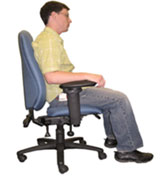 |
| 4. Inspect behind the knees and ensure there is adequate space between the back of the legs and the front of the seat pan. There should be approximately the width of a clenched fist and no less than the width of two fingers. Adjust if necessary. | 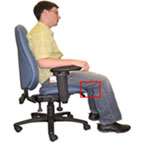 |
5. Fifth, determine the types of activities performed in a seated posture and adjust the tilt accordingly. Specifically, forward for close proximity tasks or backward for tasks done at an increased distance. Adjust if necessary. Note: The height of the seat pan may need to be adjusted to ensure the feet are firmly on the floor if the seat pan tilt has affected this position. 6. Now, inspect the backrest angle and ensure it is at a 110 to 130 degree angle in reference to the seat pan when doing computer work, and at a 90 degree angle or less when writing at the desk. |
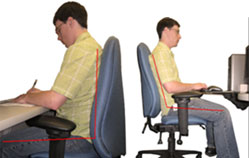 |
| 7. Inspect the backrest height and ensure the lumbar support is positioned in the middle of the lumbar curve. | 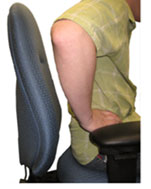 |
8. Hold the arms to the side with the elbows bent at 90°, with the forearms parallel to floor, shoulders relaxed with no elevation or flexion. (i.e. there should be no hunching or reaching.) 9. Finally, adjust the armrest height and width to support the arms in this position. |
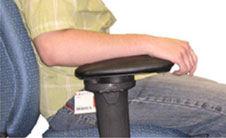 |